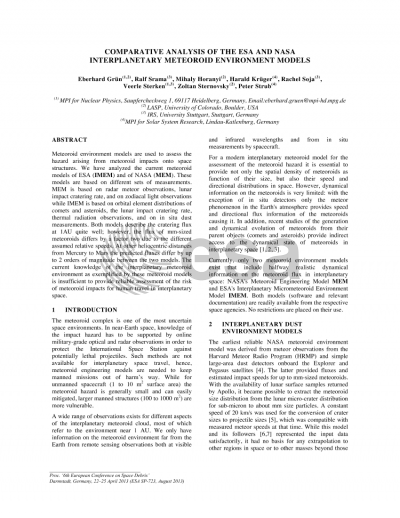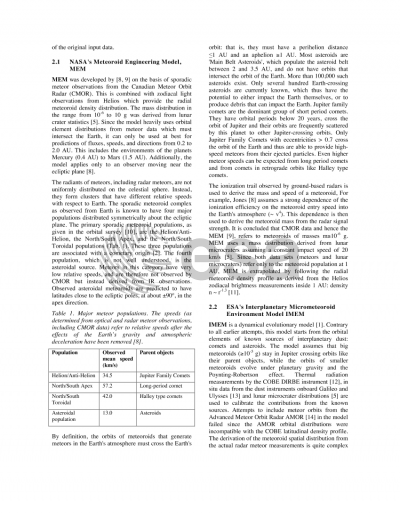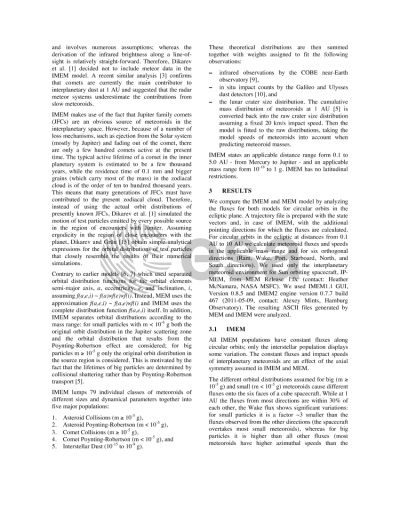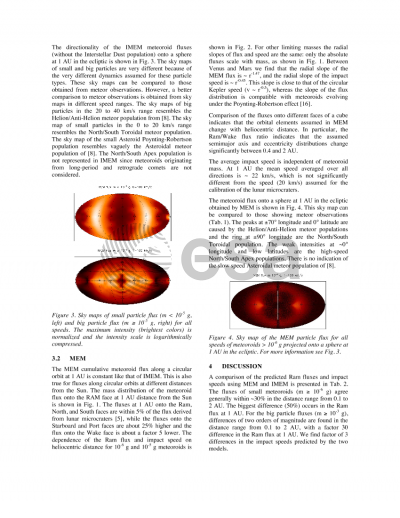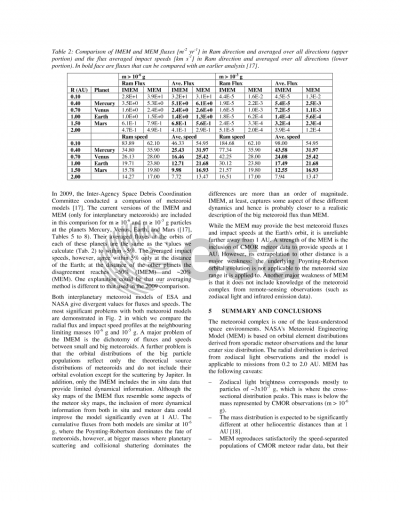Document details

Abstract
Meteoroid environment models are used to assess the hazard arising from meteoroid impacts onto space structures. We have analyzed the current meteoroid models of ESA (IMEM) and of NASA (MEM). These models are based on different sets of measurements. MEM is based on radar meteor observations, lunar impact cratering rate, and on zodiacal light observations while IMEM is based on orbital element distributions of comets and asteroids, the lunar impact cratering rate, thermal radiation observations, and on in situ dust measurements. Both models describe the cratering flux at 1AU quite well; however, the flux of mm-sized meteoroids differs by a factor two due to the different assumed relative speeds. At other heliocentric distances from Mercury to Mars the predicted fluxes differ by up to 2 orders of magnitude between the two models. The current knowledge of the interplanetary meteoroid environment as exemplified by these meteoroid models is insufficient to provide reliable assessment of the risk of meteoroid impacts for human travel in interplanetary space.
Preview
